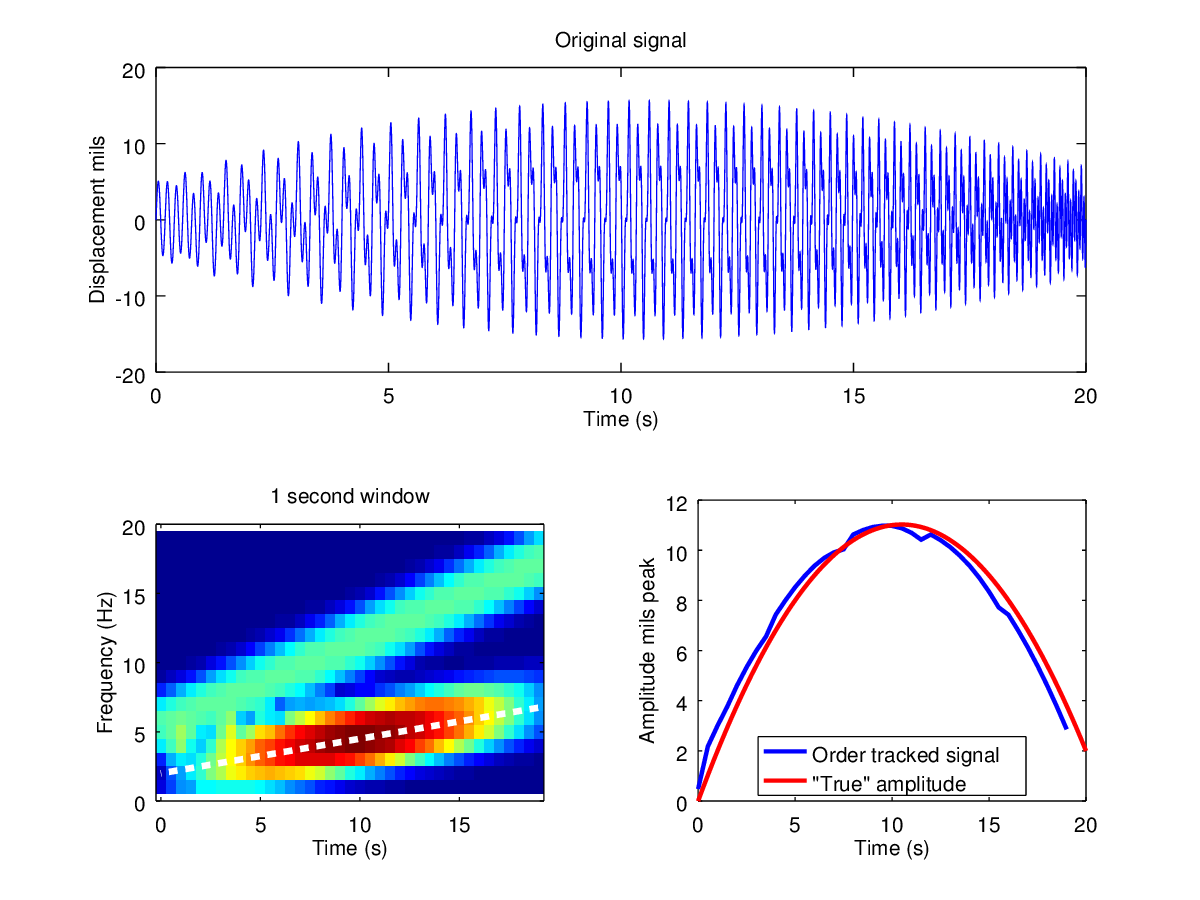



Next: Frequency shift methods
Up: Order tracking
Previous: Resample method
Contents
This is also a fairly straightforward method. Perform a Short Time
Fourier Transform 8.1 (i.e. split the vibration
signal up into segments and perform an FFT on each segment), and then
for each segment pull out the amplitude of the bin which is at the
frequency that corresponds to the shaft speed (or 2/rev, or whatever).
Despite the simplicity, I generally do not recommend this method for
many reasons:
- In a STFT, you have to deal with a time-frequency tradeoff. E.g. If
you want to get the amplitude ten times per second, you will need
frequency bins that are 10 Hz wide (assuming no overlap). That may
be too wide of a passband for your application.
- This method will be susceptible to the ``picket fence effect'' 6.4.2
unless you use a flattop window. But if you use a flattop window then
you need a lot of overlap to avoid throwing away data, which leads
to increased processing time.
- The FFT frequency bins are a constant frequency bandwidth which means
that at different speeds you get different order bandwidths. This
can be a disadvantage if your speeds change signficantly.
- FFTs require more CPU time than other methods
- You don't get any output until you have collected an entire segment.
E.g. if you have 1s long segments and there is a step change in the
signal after 0.1s, you get no indication of this until another 0.9s
has passed and you've collected the entire segment.
These various disadvantages can sometimes be mitigated if you are
post-processing data after the fact and you can play around with different
settings until you get a good answer. But the disadvantages are usually
exacerbated for real-time monitoring.
The one advantage of the STFT method is if you want to track multiple
different harmonics simultaneously. E.g. if you want to get the 1/rev
and the 2/rev and the 3/rev and the 4/rev, etc., etc., you can get
all of them in one computation. With some of the other methods you
would have to repeat the entire calculation again for each harmonic
to track.
The resample method described previously, requires no time-frequency
tradeoff, has no picket fence effect, requires less processing power,
and allows constant order bandwidth. Therefore I would recommend that
as a better method to start with.
Figure 34:

|




Next: Frequency shift methods
Up: Order tracking
Previous: Resample method
Contents
" . $row['Name'] . " Posted on " . $row['DateTime'];
echo "
";
echo $row['Comment'];
echo "
";
}
echo "
";
?>
Leave a comment on this page:

This work by Daniel Kiracofe (daniel dot kiracofe at gmail dot com)
is licensed under a Creative Commons Attribution-NonCommercial-ShareAlike 4.0 International License./' $I

